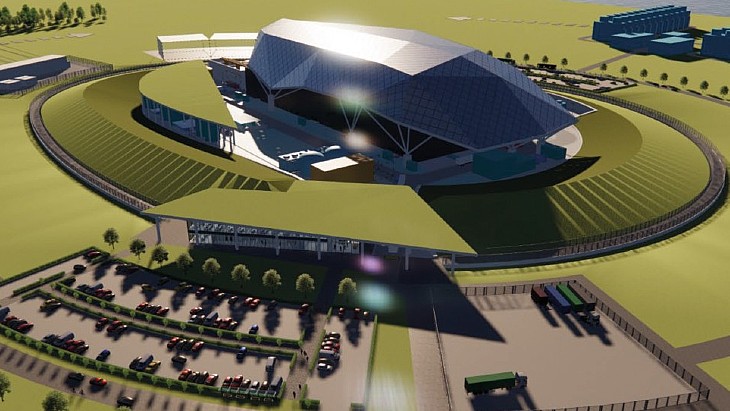The Nuclear Industry Association (NIA) has applied to the UK government for a justification decision for Rolls-Royce SMR's small modular reactor, a decision required for the operation of a new nuclear technology in the country. It marks the first ever application for justification of a UK reactor design.

A rendering of a Rolls-Royce SMR power plant (Image: Rolls-Royce SMR)
UK regulations require that any new practice that produces ionising radiation is justified by an evaluation of the potential benefits and the potential detriments.
"Our application makes the case that the benefits of clean, firm, flexible power from the reactor would far outweigh any potential risks, which are in any event rigorously controlled by robust safety features, including passive safety systems, built into the design, in line with the UK's regulatory requirements," the NIA said. "The application also demonstrates that the reactor design would support nuclear energy's contribution to a stable and well-balanced electricity grid, which is essential to reduce consumer bills and maintain economic competitiveness."
The government has confirmed that the application has been accepted for consideration, and the Department for Environment, Food and Rural Affairs (DEFRA) will support the Secretary of State in their role as the justifying authority responsible for the justification decision. DEFRA will now conduct a process of internal review and consultation with a number of statutory consultees.
The NIA noted that a justification decision is one of the required steps for the operation of a new nuclear technology in the UK, but it is not a permit or licence that allows a specific project to go ahead. "Instead, it is a generic decision based on a high-level evaluation of the potential benefits and detriments of the proposed new nuclear practice as a pre-cursor to future regulatory processes," it added.
The NIA, as the representative body of the UK civil nuclear industry, often makes justification applications, because justification is a generic decision that can be relied upon by anyone and are not personal to individual reactor vendors or project developers. The NIA has previously applied for justifications for Hitachi's Advanced Boiling Water Reactor, Westinghouse's AP1000 and Framatome's EPR. In April this year, it applied for a justification decision for Newcleo's Italian-designed lead-cooled fast reactor, the LFR-AS-200.
"Rolls-Royce SMR's design, like other SMRs, offers huge possibilities for the UK to revive our industrial capabilities and deliver low-carbon energy for net-zero and energy security," said NIA Chief Executive Tom Greatrex. "We are delighted to support this step to get the design approved in its home country.
"It is essential that our nuclear renaissance is made in Britain, so the new government should ensure that we deploy enough SMR designs to justify investment in the UK supply chain to deliver them."
Helena Perry, Rolls-Royce SMR’s Safety and Regulatory Affairs Director, said: "As the UK's most advanced SMR design, today's submission for regulatory justification is another important step to ensure that we can continue to move at pace towards deployment in the UK.
"Each Rolls-Royce SMR 'factory-built' nuclear power plant will provide enough clean, affordable, electricity to power a million homes for 60+ years - delivering energy security, enabling net-zero and making a transformational contribution to the UK economy. Rolls-Royce SMR remains on track to complete Step 2 of the Generic Design Assessment by the nuclear industry's independent regulators and move immediately into the third and final step this summer."
The Rolls-Royce SMR is a 470 MWe design based on a small pressurised water reactor. It will provide consistent baseload generation for at least 60 years. 90% of the SMR - about 16 metres by 4 metres - will be built in factory conditions, limiting on-site activity primarily to assembly of pre-fabricated, pre-tested, modules which significantly reduces project risk and has the potential to drastically shorten build schedules.
It is one of six SMR designs selected in October by Great British Nuclear on a shortlist for the UK's SMR selection competition and one of the five vendors to submit a bid by the 8 July deadline. The aim is for a final investment decision in two or three of the designs to be taken in 2029.
Researched and written by World Nuclear News